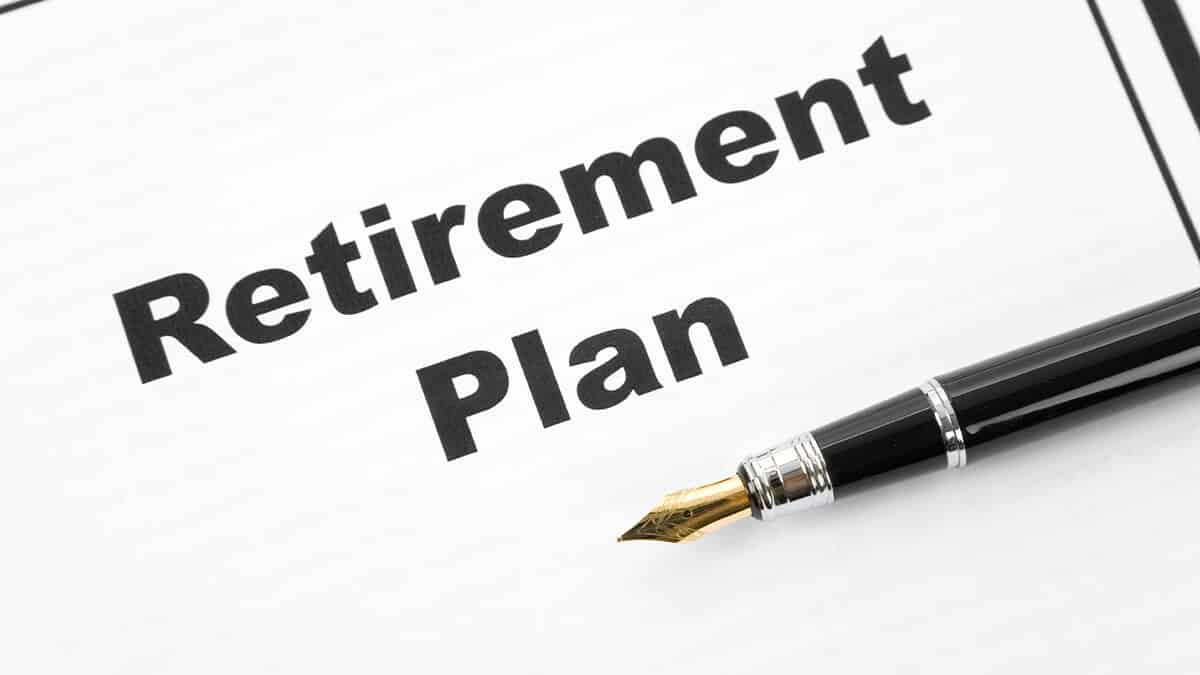In this guide
At some point most of us have wondered just how long we’re likely to live, but when it comes to planning your retirement it’s more than an idle thought.
Knowing your life expectancy is an important part of retirement planning as it’s essential to working out how much money you will need to save and how much you can afford to spend each year in retirement.
Surprisingly, most of us underestimate how long we’re likely to live – particularly as Australians have among the longest lifespans in the world.
So, if you want to feel confident about your retirement planning, it’s worth learning the key concepts around your life expectancy.
Super tip: At the bottom of this guide you can use our Life Expectancy Calculator to estimate the average life expectancy for your age and gender. Click here to jump straight to the calculator
See also our Lifetime estimator calcuator.
What is life expectancy?
Life expectancy is a statistical measure that estimates how long a typical person of a specific age and sex is likely to live.
It’s based on your year of birth and gender, but does not consider your personal circumstances, such as your health, family history, diet and lifestyle.
That means it’s an estimate of how long a typical person is likely to live, not a prediction of how long you will live.
To complicate things, there are a number of different life expectancy figures available. These vary from average life expectancy at birth to average life expectancy at age 65 or older.
Why does life expectancy matter?
Understanding the different life expectancy figures is very important when it comes to planning your retirement income needs and the timing of your retirement.
Most people base their retirement plans on the average life expectancy at birth figure – not on their life expectancy at age 65 – which can be several years longer. Knowing this may prompt you to work a few years longer or to target a higher retirement super balance, for example.
Read more tips on how to make your super balance last.
Need to know
Many pre-retirees forget the average life expectancy figure means half of all Australian retirees will not reach their life expectancy, but half will live more years than this projection.
Typically, two-thirds of people die within eight years either side of the average life expectancy.
Watch: Life expectancy and longevity
David Williams from My Longevity talks about some of the more confusing aspects and limitations of calculating life expectancy.
Transcript
What are some of the most confusing aspects about life expectancy?
Time is one of the easiest things to talk about but, paradoxically, life expectancy, which is really important, people find it very difficult to understand what it means and what to do about it.
It’s not surprising because life expectancies have been changing over our lifetimes quite dramatically. So people are naturally a bit confused about what’s going on here and how much it applies to them.
The problem is that the data we have is good data, it’s a proper actuarial data, but that’s what it is. It looks at averages. And the problem is nobody is average, not you or me. How do we find out what we are is the big problem because if we don’t know our average then the average isn’t much use to us.
What’s the problem with the average? Well, at age 65 the average includes about the typical range of two or three years, only covers about a quarter of the population, which means three quarters of the population aren’t within three years of the average.
That’s a problem, isn’t it? Because if you’re going to try and work out how long your money’s going to last, and that’s really important, you’ve got to have a number that represents you. And so that’s what we set out to solve. How do you find a number that’s more of a personal number? It can’t be precise. Even the average is not precise, but it gives you a better indication of you. And more importantly, it starts to help you find out why you might be different.
What are some life expectancy gender differences, and how does that impact couples in retirement?
We all know that women tend to live longer than men, although I must say that’s changing a bit. As we get older, the differences are becoming a bit less interestingly and by about age 90, there’s not much difference at all.
That said, women do live longer typically, and interestingly they have more problems with their health and wellness and so their period of dependency is longer than men.
Now, that’s a bit of a double whammy because not only are they living longer, but the later period of their life or the last period of their life is longer as well. So in let’s say, a typical married couple with a couple of years life expectancy difference. So the guy in theory has died just as a woman who’s probably looked after him, has entered her dependent phase and is going through that alone.
Now, the average woman typically has less super as well. So there are some interesting gender differences, which the super system doesn’t really address terribly well.
Can you describe what you mean by ‘longevity’?
We use the term longevity to mean the rest of your life. So concepts like retirement become a bit secondary. That’s a decision to be made in the context of the rest of your life. It’s not the issue that you’re planning for. It’s one of the number of things that happen during the rest of your life.
And as we mentioned earlier, the life expectancies don’t tell us much about you and who you are. We get more different from each other as we get older, not more alike. So to use an average becomes even more unhelpful.
So when somebody asks your age, it doesn’t tell them much about you, and whether you’re retired or not is irrelevant. How well you are and what your interests are and what your plan to do with them are really the key elements.
And once you start to focus on that, then the overall time frame becomes important and what it might look like for you becomes important. So that’s where we go. We try and help those answers.
How did you come up with the SHAPE plan?
From my earlier comment about nobody’s average, the challenge was, well how do we define what we are in a way that gives us a useful approach to the rest of our life to understanding what it might look like?
So we did a lot of research. I’ve spent over two years researching just what was available that said, “This person will live longer than that person because of…”, and there was a surprising amount of information currently being published about just that sort of thing.
Was it your diet? There’s all sorts of things about diets, different diets like the Mediterranean diet. All those things about was red wine good for you or not. Very popular research subject, and all that stuff.
So I got hundreds of research reports, which I validated. I mean for red wine for example, if it was the Sardinian Red Wine Society’s report, you probably put that to the side. But if it was a proper ethical report you’d take note of it.
So there’s a lot of information and I had to sort it out in a meaningful way. And finally I decided to put it into five groups because I thought they were useful. They would give you a point of reference for yourself.
Those five groups were our surroundings, both the physical and the social surroundings, our health, all the obvious things and perhaps a few less obvious things but exercise and the actual tests that we can do, our attitude. It surprised me. There’s some really good information on how our attitude affected how long we might live. So that was important.
The gene pool. People think that gene pool does it all but it’s barely 30%, and it is important if you can find out how your gene pool has been successful in the past. So you need to tell about your ancestors and your relatives, but that was important enough to include.
Finally what we call eating but in fact includes anything we put in like smoking, eating, sunlight, because that’s important, and so on.
So they were the five areas, plus a bit of information on socioeconomic. How well educated, how much you’re earning because that’s an indicator.
So the five things form the nice word SHAPE. So I thought I’ll take that. So we call it our SHAPE Analyser and that’s what we use. So you can go to our free website on this and answer the 50 or so questions, roughly equal numbers in each of those five categories, and we will give you an answer to say, “This is what it looks like on the basis of what you’ve told us.” So it’s your information, not ours.
We also help by saying, we flag the questions where you answered yes that might suggest you should do something about it, which typically are about five or six questions for people. Not a lot. So that was a good start. We could show people roughly how long they might live, why, and the things they might look at to help themselves.
At the end of the SHAPE Analyser, we believe the first point of thought and reflection should be your health advisers because you don’t rush off and start exercising because we say you should get more exercise.
You really need to form, the information we’re trying to provide, helps you have a proper partnership with your health advisers where you’re working together on the problem rather than just simply telling you what to do. You’re working out together and then you both own the journey.
David Williams is the founder of MyLongevity, which helps you answer questions such as ‘how long could I live?’, ‘what can I do about it?’ and ‘what will be my quality of life?’. Click here to take a free SHAPE analysis.
If you plan your retirement income to only last until the average life expectancy at birth figure, you could run out of money in the final years of your retirement. A better choice may be to use your Mortality-Improved Life Expectancy (see section below), as this estimate includes the trend for improved mortality or living longer.
For most people attempting to project how they will live and how many years they will need a retirement income, this life expectancy figure may be more realistic and is usually the figure used by professional financial advisers.
Living long in the Lucky Country
Australia’s life expectancy statistics show that, as a population group, we’re all living to an older age.
In Australia, our average life expectancy at birth has risen steadily over the past century and is continuing to increase.
Life expectancy at birth in Australia (1975–2017)
| Period | 1975–1977 | 1980–1982 | 1985–1987 | 1990–1992 | 1995–1997 |
| Male | 70 | 71 | 73 | 74 | 76 |
| Female | 77 | 78 | 79 | 80 | 81 |
| Period | 2000–2002 | 2005–2007 | 2010–2012 | 2015–2017 | |
| Male | 78 | 79 | 80 | 81 | |
| Female | 83 | 84 | 84 | 85 |
Source: Australian Life Tables 2015–17, Australian Government Actuary
Note: The Australian Life Tables are released every five years, with the next data release expected in 2024.
In fact, Aussies are lucky to be living in a country with the third highest life expectancies in the world, with only Monaco and Japan having higher life expectancies. Australia’s male life expectancy ranks second, while life expectancy for females ranks fifth in the world.
The Australian Bureau of Statistics (ABS) regularly estimates the life expectancy at birth for Australians. In its latest study (2019–21), the ABS estimated the life expectancy for a newborn male is 81.3 years (up from 80.7 years in 2016–18), with a newborn female likely to enjoy 85.4 years (up from 84.9 years).
For the Australian population as a whole, life expectancy at birth continues to rise, increasing by 1.6 years for males and 1.2 years for females over the past 10 years.
Life expectancy at birth by state and territory
| State or territory of usual residence | 2009–11 | 2019–21 | Increase over 10 years | |||
|---|---|---|---|---|---|---|
| Males (years) | Females (years) | Males (years) | Females (years) | Males (years) | Females (years) | |
| New South Wales | 79.8 | 84.2 | 81.4 | 85.4 | 1.6 | 1.2 |
| Victoria | 80.3 | 84.4 | 81.7 | 85.7 | 1.4 | 1.3 |
| Queensland | 79.5 | 84.1 | 80.9 | 85.1 | 1.4 | 1.0 |
| South Australia | 79.7 | 84.0 | 81.0 | 85.3 | 1.3 | 1.3 |
| Western Australia | 80.1 | 84.6 | 81.7 | 85.9 | 1.6 | 1.3 |
| Tasmania | 78.3 | 82.5 | 80.3 | 84.4 | 2.0 | 1.9 |
| Northern Territory | 74.9 | 80.5 | 76.3 | 81.0 | 1.4 | 0.5 |
| ACT | 79.9 | 84.2 | 81.3 | 85.4 | 1.6 | 1.2 |
| Australia | 79.7 | 84.2 | 81.3 | 85.4 | 1.6 | 1.2 |
Source: Australian Bureau of Statistics, 2022




